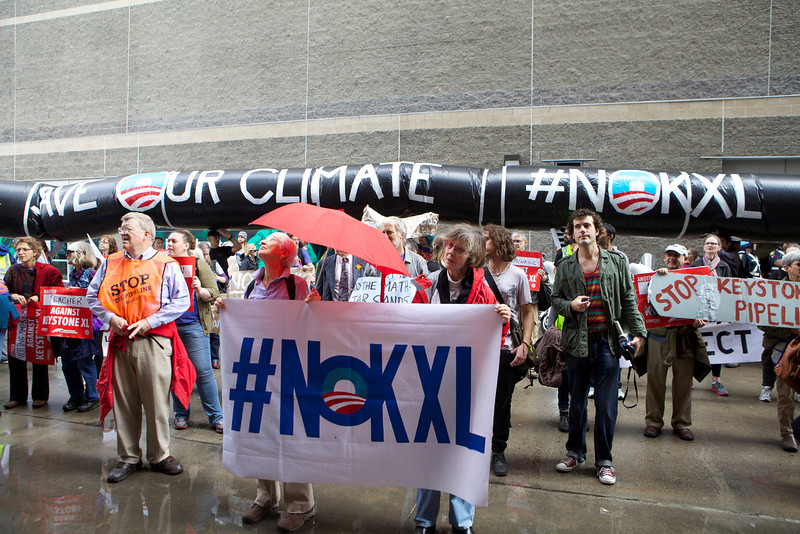Module 11: Environmental Protection and Negative Externalities
Section outline
-

The problem of pollution arises for every economy in the world, whether high-income or low-income, and whether market-oriented or command-oriented. Every country needs to strike some balance between production and environmental quality. This chapter begins by discussing how firms may fail to take certain social costs, like pollution, into their planning if they do not need to pay these costs. Traditionally, policies for environmental protection have focused on governmental limits on how much of each pollutant could be emitted. While this approach has had some success, economists have suggested a range of more flexible, market-oriented policies that reduce pollution at a lower cost. We will consider both approaches, but first let’s see how economists frame and analyze these issues.
Upon completion of this module, you will be able to:
- Explain and give examples of positive and negative externalities
- Identify equilibrium price and quantity
- Evaluate how firms can contribute to market failure
- Explain command-and-control regulation
- Evaluate the effectiveness of command-and-control regulation
- Show how pollution charges impact firm decisions
- Suggest other laws and regulations that could fall under pollution charges
- Explain the significance of marketable permits and property rights
- Evaluate which policies are most appropriate for various situations
- Evaluate the benefits and costs of environmental protection
- Explain the effects of ecotourism
- Apply marginal analysis to illustrate the marginal costs and marginal benefits of reducing pollution
- Explain biodiversity
- Analyze the partnership of high-income and low-income countries in efforts to address international externalities
- Apply the production possibility frontier to evaluate the tradeoff between economic output and the environment
- Interpret a graphic representation of the tradeoff between economic output and environmental protection
To achieve these objectives: [Edit these items to match your resources and activities.]
- Read the Module 11 Introduction
- Read Chapter 11 in the course textbook, Microeconomics.
- Complete the Module 11 Discussion Forum.
- Complete the Module 11 Quiz.
- For Course Instructors, list any other reading assignments here.
[Include all reading assignments here that are outside of Moodle. Be as
concise as possible. More information can be included in the
third-party section below, if necessary.]
- Complete the [specific activities in the module. Include all in the order you want them completed.]
Module Pressbooks Resources and Activities
You will find the following resources and activities in this module at the Pressbooks website. Click on the links below to access or complete each item.
-
Chapter 11 of Introduction to Microeconomics
-
Module 11 In Class Group Activity (hide from students)
Course SLO 1: Identify the basic economic principles that serve as the foundation of economic analysis
Course SLO 3: Analyze the economic impact of government regulation, price setting, and taxes on consumers and producers
Course SLO 4: Explain how externalities affect the efficiency of markets, and what can be done to improve the efficiency of markets in which externalities existModule SLO: 11.4.1 – Evaluate the benefits and costs of environmental protection;
Module SLO: 11.4.3 – Apply marginal analysis to illustrate the marginal costs and marginal benefits of reducing pollution;
Module SLO: 11.6.1 – Apply the production possibility frontier to evaluate the tradeoff between economic output and the environment
Section 4 and 6 of this textbook introduce costs and tradeoffs that we see when we enact environmental protection. The potential side effects of eliminating pollution are applications of the Law of Diminishing Marginal Utility, which we saw in an earlier chapter section "How Individuals Make Choices Based on Their Budget Constraint.” For this discussion, your task is to:
1. Explain potential issues if we have a policy that only seeks to maximize market productivity.
2. Explain potential issues if we implement a policy that only concerns environmental protection.
Instructor Notes:
In this prompt, students should pick up on diminishing marginal utility. If we have a set of policy that focuses solely on market outcomes, we may run into major issues with pollution. As we work towards cleaner air, however, the benefits of cleaner air become less and less transparent. In large enough doses, everything is a poison, and in small enough doses, certain goods are not necessarily harmful. Similar to pollution, society will be less willing to allocate funds and resources to clean up more when pollution reaches a reasonable level since they won’t see the benefits of further cleaning when we reach the other end of this spectrum.
Background Colour
Font Face
Font Kerning
Font Size
Image Visibility
Letter Spacing
Line Height
Link Highlight
Text Colour
